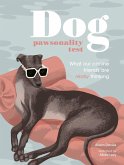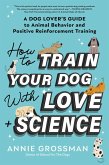Dogs don't chew aimlessly. Every bite serves a purpose. Puppies chew to explore their world, relieve teething pain, and develop strong jaws. Adult dogs chew to relieve stress, burn excess energy, and self-soothe. Senior dogs chew to maintain cognitive function and keep their teeth healthy. Every stage of life brings different motivations, and addressing those needs requires more than just discipline or training-it demands an understanding of what's happening beneath the surface.
Some dogs chew because they're bored, lacking mental and physical stimulation. Others chew because they're anxious, seeking comfort through a repetitive and familiar motion. Separation anxiety, fear of new environments, or even an inconsistent routine can trigger destructive behavior. What looks like mindless destruction is often a coping mechanism, a way for dogs to regain control over an environment that feels unpredictable.
Chewing also connects to a dog's biology in ways that many owners overlook. The shape of a dog's jaw, the structure of their teeth, and the strength of their bite all influence how they interact with objects. Certain breeds are genetically wired to chew more than others. Retrievers, bred for holding and carrying, often seek objects to gnaw. Terriers, natural hunters, use their teeth to dig, shake, and tear. Herding dogs, constantly in motion, may chew as an outlet for excess energy. Recognizing these breed-specific tendencies allows owners to redirect the behavior rather than fight against it.
The environment plays an undeniable role in shaping a dog's chewing habits. Dogs left alone for long hours often turn to chewing as entertainment. Those in overstimulating households may chew to block out excess noise or activity. Even diet can contribute to the problem-nutritional deficiencies or imbalanced meals can create cravings that lead dogs to seek out non-food objects. Understanding these external factors is critical to preventing destructive chewing before it starts.
Punishment doesn't solve the problem. Scolding a dog after the fact only creates confusion, eroding trust without addressing the root cause. The most effective strategies focus on redirection and prevention. Providing the right types of chews, engaging in interactive play, and creating a stable routine all work to satisfy a dog's chewing instincts in a constructive way. Training isn't about stopping chewing-it's about teaching a dog what's acceptable to chew and why.
This book gives dog owners the tools to identify why their dog chews, how to recognize patterns in destructive behavior, and what steps to take to eliminate the problem at its source. Readers will learn how to assess their dog's specific needs, tailor their environment for success, and implement training techniques that create long-term behavioral change. They will understand how a dog's brain processes stress, how their chewing habits evolve over time, and what signals indicate deeper psychological needs. They will gain insight into how their own behavior influences their dog's chewing, how to establish boundaries without damaging trust, and how to turn a destructive habit into a manageable, natural outlet.
Dieser Download kann aus rechtlichen Gründen nur mit Rechnungsadresse in A, B, CY, CZ, D, DK, EW, E, FIN, F, GR, H, IRL, I, LT, L, LR, M, NL, PL, P, R, S, SLO, SK ausgeliefert werden.









